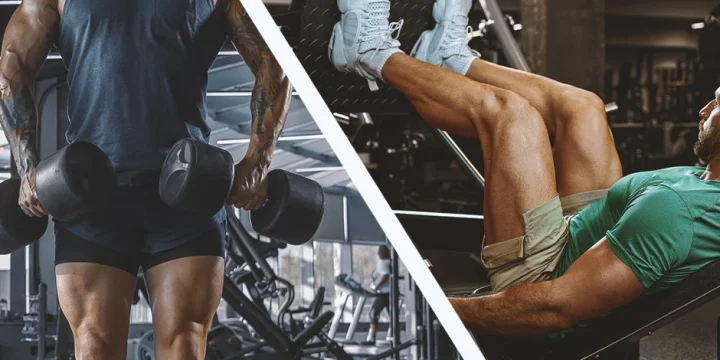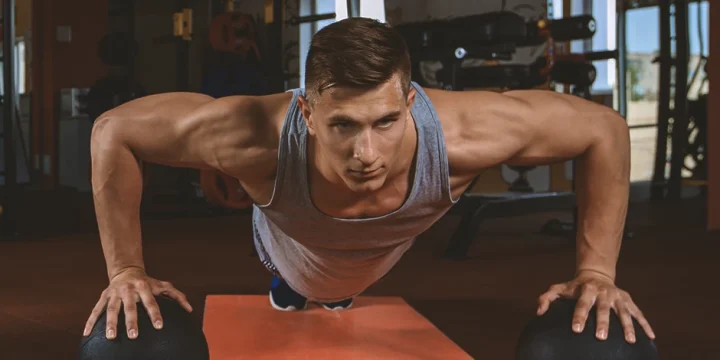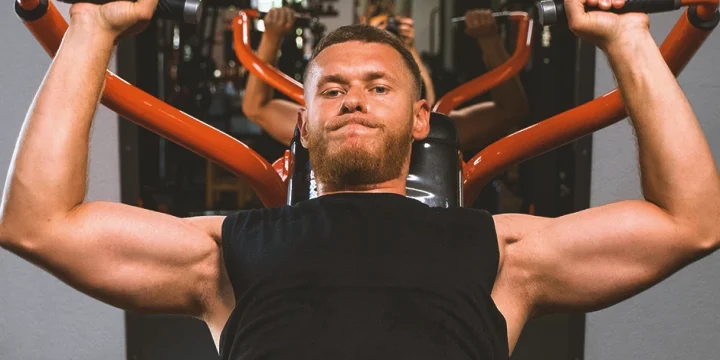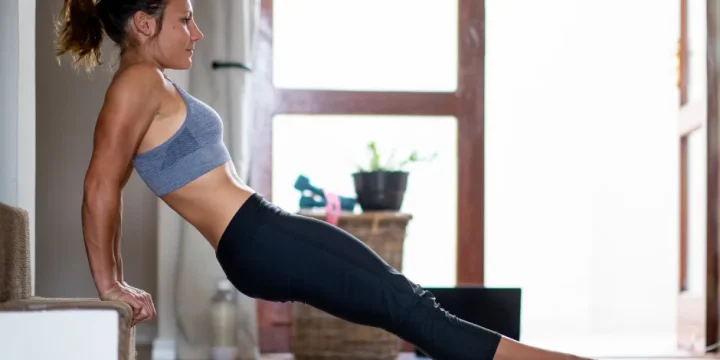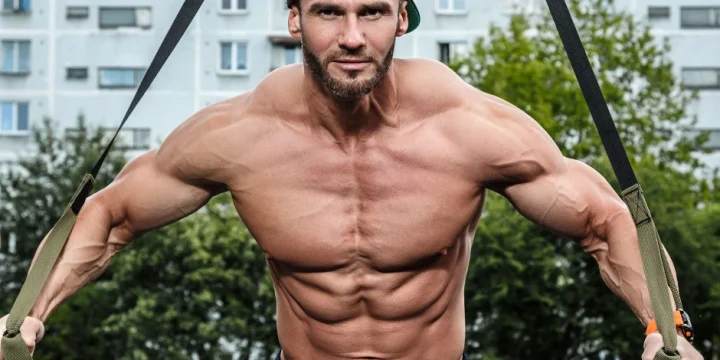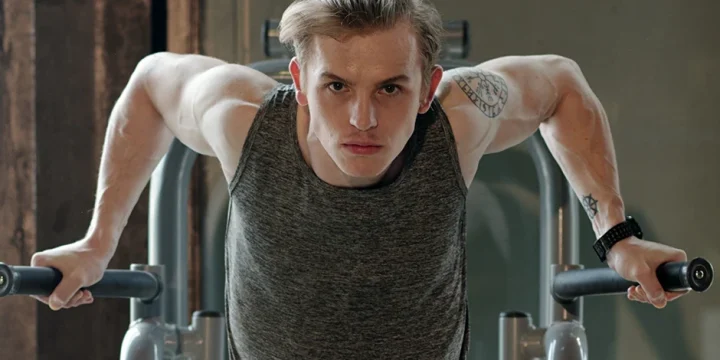If you have recently invested in a pull-up bar, you may have stuck to just performing pull-ups and chin-ups. There are actually many more exercises you could perform.
This piece of apparatus can build muscle and strength in your back, biceps, and triceps, while also helping to turn your shoulders into boulders.
Here are some of the best pull-up bar exercises you should perform to build a strong upper back. I would highly recommend adding some of these to your next training session.
Quick Summary
- Key exercises for enhancing upper body strength include assisted pull-ups, negative pull-ups, standard pull-ups, chin-ups, hanging knee raises, knees to elbows, muscle ups, windscreen wipers, burpee pull-up, and lat pulldowns.
- Emphasizing correct form in exercises like negative pull-ups and chin-ups is crucial to effectively engage muscles and avoid injuries.
- Engaging regularly in these exercises, particularly pull-ups and chin-ups, can significantly increase upper body muscular strength and endurance.
- In my opinion, integrating a diverse range of pull-up bar exercises, such as those mentioned, is crucial for achieving comprehensive upper body strength and improving overall physical fitness.
Top Pull Up Bar Exercises
Tailoring your pull-up bar routines to specific fitness goals, whether it's muscle building, fat loss, or endurance, can significantly optimize your training outcomes. For instance, incorporating high-repetition sets for endurance, adding weights for muscle building, or integrating pull-ups into a circuit training for fat loss, can provide targeted results based on individual fitness objectives.
To maximize the benefits of pull-up bar exercises, consider incorporating yoga and Pilates techniques, which can significantly improve flexibility, balance, and core strength, thereby enhancing your ability to perform various pull-up variations more effectively, as confirmed by the study published on the National Library of Medicine website [1].
.
Make sure you get the correct pull-up bar:
1. Assisted Pull-Ups
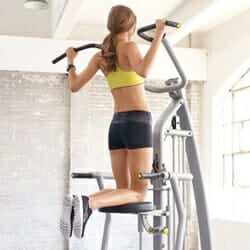
When you first get your pull-up bar, you may not have enough upper body strength or technique to even perform one repetition.
The assisted pull-up can help with this and is perfect for beginners or for those wishing to work out till failure.
Like the standard pull-up, this variation will build the muscles in your back, shoulders, biceps, and triceps.
To perform this exercise, you will need a resistance band that you will hook around your knee or foot while performing a pull-up using the regular technique.
When you first start off with assisted pull-ups, you may want to use a stronger resistance band, but as your strength and technique improve you will need to use a band that offers less and less resistance.
Before long, you won’t require a band at all and will be able to perform a standard pull-up unassisted.
"To begin building pulling strength, you can do bent over barbell or dumbbell rows. Both are effective at building pulling strength and require less mobility to perform correctly."
- Jeff Kuhland, Certification Team Instructor, MovNat
2. Negative Pull-Ups
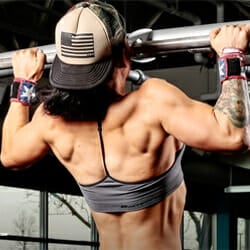
Another method you can use to progress to a full pull-up is the negative variety. In my early days, negative pull-ups were a game-changer for me.
They focus on the downward movement, enhancing grip strength and control.
When you perform negative pull-ups, you are only performing the downward half of the movement. The part where you are lowering yourself down from the bar.
It teaches you the technique needed to perform a pull-up while also building strength in your upper body and improving your grip strength -- all important aspects needed to perform a standard pull-up.
To perform negative pull-ups, you will need a bench or something tall enough so that you can get to the top of the bar without having to pull yourself up.
If this is not an option, you can also jump to the top of the bar (be safe, okay!).
Once you are at the top of the bar with your grip shoulder-width apart, keep control as you slowly lower your legs to the floor.
3. Pull-Ups
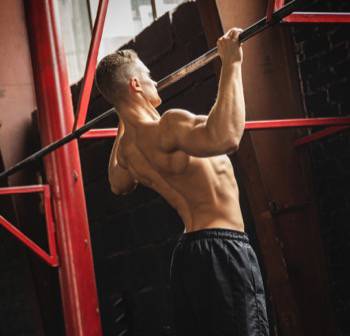
The standard pull-up is a popular compound exercise, which means it works multiple muscles.
It is something you should be doing on a regular basis if you want to build your back muscles.
To perform a pull-up, you will need to grip the bar with your palms facing away from your body.
Your shoulders should be slightly wider than shoulder-width apart.
Hang from the bar by bending your knees, your arms should be extended straight at the stage.
Next, pull yourself up until your chin passes the bar. You should pull your elbows down towards the ground while keeping them close to your body, keeping your legs bent throughout.
Once you have reached the top, you will then slowly lower yourself down to the starting position so that your elbows are straight. This is one repetition.
Related Articles:
4. Chin-Ups
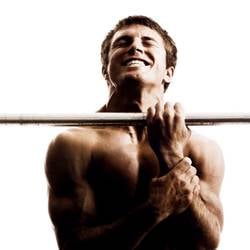
If you want to beef up your biceps then you need to be performing chin-ups on a regular basis. From personal experience, regular chin-ups significantly improved my bicep strength more than any free weight exercise.
This bodyweight exercise is another popular choice and will give your biceps an intense workout that will be greater than any exercise performed using free weights.
Your grip should be shoulder-width apart or perhaps a little closer together depending on your own preference.
To perform this biceps workout, you will need to hold the bar using an underhand (supinated) grip.
Hold the bar with palms facing you and straighten your arms; bend and cross your legs. Keep your body stable and core engaged throughout the exercise.
Pull up until your chin is level with the bar, retracting your shoulder blades.
At the top, hold briefly to intensify bicep engagement, then lower yourself steadily to complete a rep. Aim for as many repetitions as you can manage.
5. Hanging Knee Raises
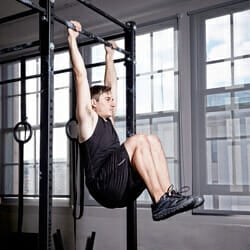
For those looking to strengthen their core and build a six-pack, you may focus on exercises such as the sit-up or crunch.
While both of these exercises work your abdominals, they mostly focus on your upper abs.
This means that you may neglect your lower abs, so you may not achieve that six-pack.
Exercises like hanging knee raises can work your lower abs and are well worth adding to your workout regime.
Hanging knee raises start with you suspended from a pull-up bar, body straight, using an overhand grip.
Bend your knees and raise your legs to where thighs are parallel with the ground. Lower them back with control to finish one rep.
To advance, try hanging leg raises, maintaining straight legs throughout. This variation intensifies the workout, targeting your lower abs effectively.
6. Knees To Elbows
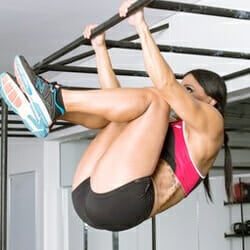
This is another movement that will blast your abdominal muscles. I found knees to elbows particularly effective for engaging the entire core, not just the abs.
To perform knees to elbows, you will need to hang from the bar with your palms facing away from your body.
Draw your shoulder blades down and back as you tuck your knees up towards your elbows before slowly lowering back down to the starting position.
You should try to engage your lats while performing this movement.
7. Muscle Ups

Muscle-ups are a staple of CrossFit and are a progression of the standard pull-up.
Once you have become adept at knocking out repetition after repetition of pull-ups, you may want to move onto this movement.
It will need to be performed at a quicker pace, so it will boost your fitness levels as well as your strength and power.
To start this movement, you will need to hang from the bar with your palms facing away from your body.
Engage your lats and shoulders, then initiate a kip swing by tensing your glutes, abs, and core. In the hollow position, with legs forward, explosively pull up using your back and shoulders, lifting your head and chest above the bar.
Drive your hips towards your hands and your head forward to gain momentum.
Once above the bar, push up until your arms straighten. Control your descent back to the starting position to complete the rep.
8. Windscreen Wipers
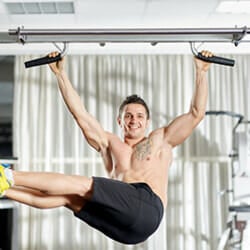
Exercises like the windscreen wiper are definitely not for beginners, but it is certainly one that you can work towards and one that is well worth adding to your arsenal.
It predominantly works your obliques but is also good for your overall fitness, too.
When I first attempted windscreen wipers, they were challenging, but they have been excellent for my oblique strength.
To perform windscreen wipers, you will need to hang from a pull-up bar with an overhand grip with your hands shoulder-width apart.
At this stage, your arms will be extended so that you are hanging from the bar.
The next step is to pull your legs toward the bar, keeping them straight. Your back should be parallel to the floor, with your arms at a right angle to them.
While keeping your back and arms in this position, you will be rotating your torso from 90 degrees on the left to 90 degrees on the right. This is a single rep.
9. Burpee Pull-Up
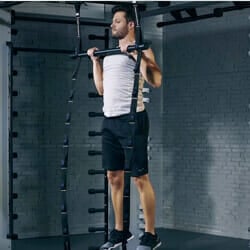
What could be harder than a burpee? Well, try adding a pull-up into the mix.
The burpee is primarily a cardiovascular exercise and is one of the best ways to improve your overall fitness. When you add a pull-up, you are taking it into another dimension.
To perform the burpee pull-up, you will need to stand with your feet shoulder-width apart with the pull-up bar overhead.
Next, drop into a squat position, placing your hands beside your feet. Jump your feet back into a press-up position.
Perform a push-up before then jumping back into the squat position. This is the burpee section completed.
You will then stand up, grab the bar, and perform a classic pull-up.
10. Lat Pulldowns
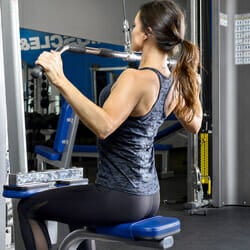
You may think that you won’t be able to perform an exercise like lat pulldowns in the comfort of your own home without a cable machine, but it is certainly possible.
Using resistance bands for lat pulldowns at home, as I often do, effectively targets the latissimus dorsi without needing a cable machine.
To perform this movement using a pull-up bar, you will need to tie a resistance band around the pull-up bar. Next, either sit or kneel on the floor or sit on a bench while you hold onto the band.
Keeping your chest elevated throughout the exercise, pull the band down and towards your lower chest.
You should aim to squeeze your shoulders together as your hands reach your chest.
This exercise specifically works your latissimus dorsi, which is a broad muscle that covers the back of your torso, below the arms and across the ribs.
As the lat pulldown is a compound exercise, this movement also works your biceps and triceps, as well as the muscles found in your rotator cuff and chest.
Check out the best lat pulldown machines out on the market.
Check out the best lat pulldown machines out on the market.
References:
- https://www.ncbi.nlm.nih.gov/pmc/articles/PMC3193654/
About The Author
You May Also Like
